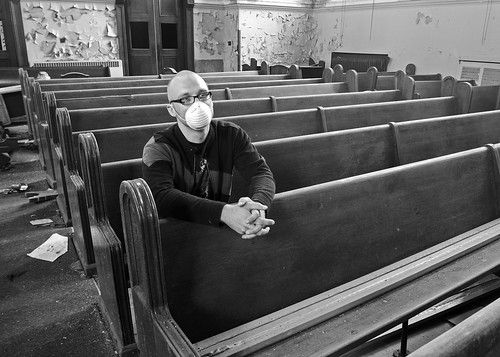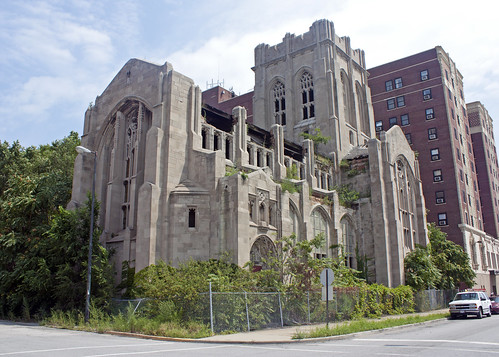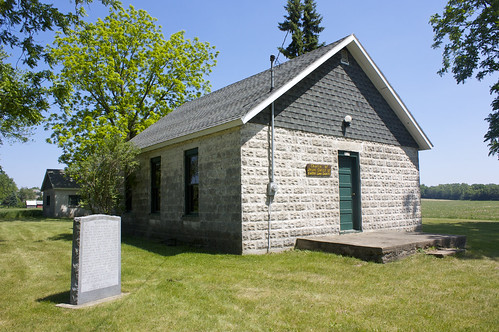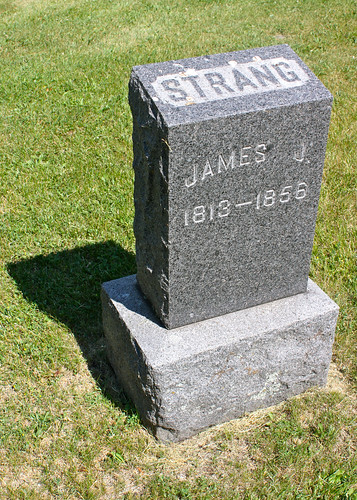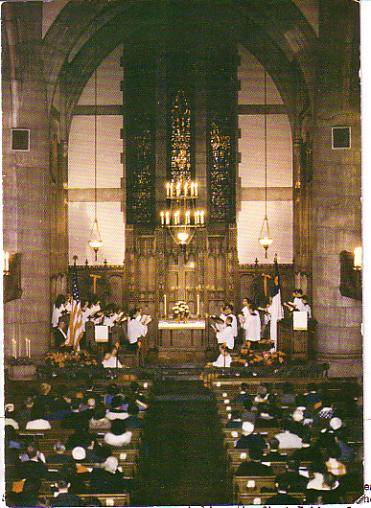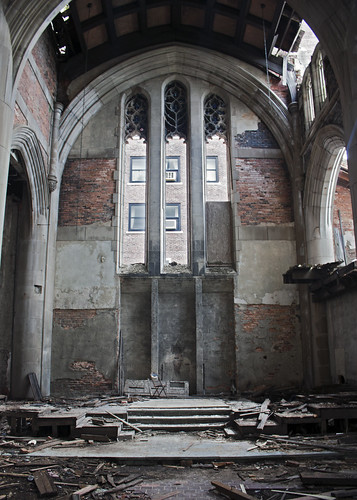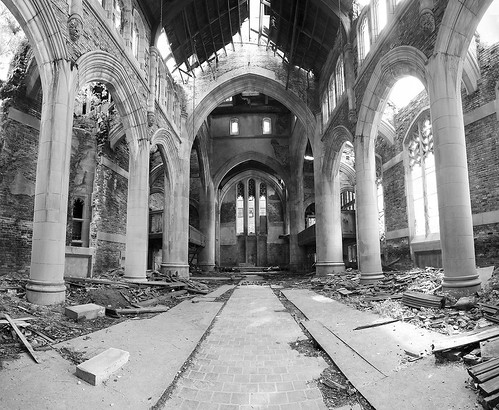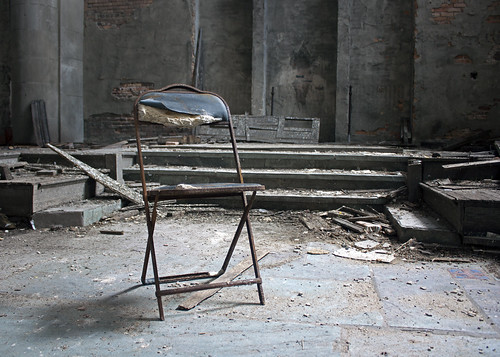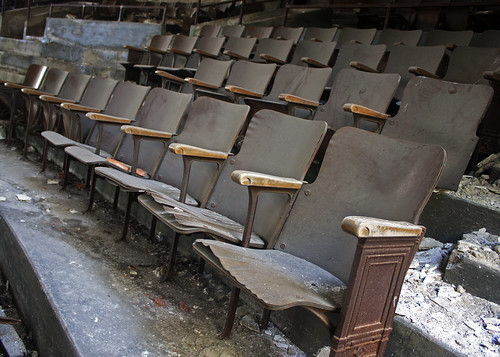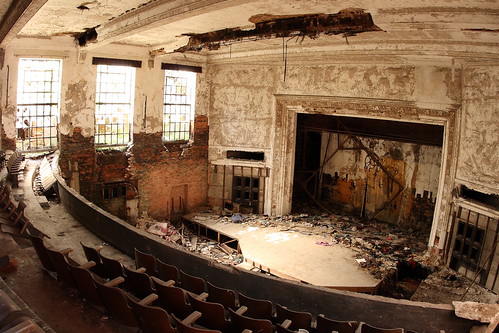
Photo: All that remains of the Alexian Brothers Novitiate.
The well-to-do widow of lawyer F. M. Peters, Mrs. Jennie Peters, dearly loved her daughter. In the latter portion of the 1930’s architects John King and Gordon Feldhausen were tasked with creating a unique building just for her. Unlike the farmhouses, barns, and silos typical for the Gresham, WI community this structure would be designed around a single individual. The expansive home surrounded by trees along the banks of the Red River would provide much needed respite to Jennie’s disabled daughter Jane.
Unfortunately Jane would never set foot in the house. She passed away just six weeks after construction began.
Undeterred by the unfortunate events, Mrs. Peters made the mansion in the quiet rural community her home. When completed the stone Georgian colonial building featured 20 rooms. On the first floor the were the drawing room, library, guest room, dining room, kitchen, pantry and laundry. The second floor had three bedrooms, three bathrooms, and four rooms for the maids. A nearby four car garage also had quarters above it. The total cost of the property amounted to $250,000 (or approximately $3.9 million adjusting for inflation).
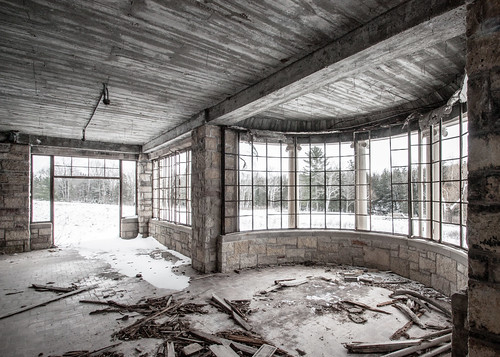
Photo: One of the few remaining beautiful architectural flairs in an otherwise empty mansion.
Although Jennie was able to assimilate into the community there were rumors that one day she would give the property away. The rumor bore truth in 1950 when Jennie gifted the 232-acre estate to the Alexian Brothers Novitiate. Shortly thereafter novices preparing for service to the Catholic church moved to the novitiate to begin their training. A $1.5 million (about $12 million today) facility named Peters Hall was built adjacent to the mansion to serve the growing number of faculty, staff, and novices.
The novitiate struggled to keep pace with the edicts of the Second Vatican Council, which required its religious orders provide a college level education to novices. This meant that novices had to travel 55 miles to St. Norbert’s College in De Pere, WI. The commute proved to be time-consuming, expensive, and as anyone who has driven through Wisconsin in the middle of winter knows, dangerous at times. The decision was made in 1968 to relocate the novitiate to Chicago.
In the following years the property received no substantial bids when placed on the market. In 1974 negotiations were in motion with the Green Bay Alcohol and Drug Abuse Council to convert the novitiate into a rehabilitation center. Those plans came to a screeching halt around midnight on New Year’s Eve. The caretaker Joe Plonka, his wife, two children, and two friends were awoken by armed members of the Menominee Warrior Society seizing control of the novitiate buildings. The Menominee Warrior Society began their occupation of the property claiming that the lands rightfully belonged to their tribe.
With experienced Vietnam veterans in their midst the Menominee Warrior Society quickly secured their foothold. In response local, state, and federal agents quickly descended upon the area. Electricity and telephone service for the novitiate were cut. A perimeter with guarded checkpoints around the area were erected. Tensions ran high as shots were frequently exchanged between the occupiers and government officials. The Menominee Warrior Society’s goals were clear in their negotiations with their motto “deed or death.”
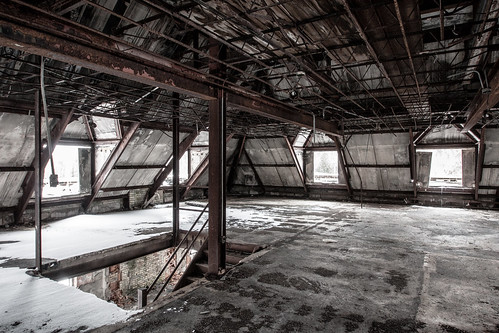
Photo: The top of the mansion where Menominee Warrior Society members kept watch.
Seeking to avoid bloodshed the Alexian Brothers Novitiate sold the property to the Menominee Tribe for $1. On February 3, 1975 the members of the Menominee Warrior Society willingly turned themselves over to the National Guard. The 34 day standoff ended with no major injuries between the Menominee Warrior Society and officials. The ordeal could have ended a lot sooner as Menominee Warrior Society general Mike Sturdevant later admitted that they ran out of ammunition on January 4.
As per the negotiated agreement the Menominee Tribe would have to make a “good faith” effort to reimburse the novitiate $750,000 for the property. They were unable to afford upkeep on the facility and ceded control back to the Alexian Brothers Novitiate after just five months. The novitiate fielded several proposals from potential new occupants, but nothing substantial ever materialized.
On the morning of October 11, 1975 the neighbors adjacent to the novitiate noticed smoke billowing above the trees. Due to a dense fog a fire raged for hours within the mansion. Responders to the scene described the inside as a total loss.
After the suspected arson the property changed hands several times. The remaining structures fell into disrepair after decades of neglect. Frequent break-ins and vandalism hastened its decline. In 2003 everything but the mansion was torn down. Some of the land has since been parceled out, though the main property with the gutted mansion remains.
Video (source): J. Patrick Rick’s documentary “The Abbey & Me.”
Resources:
Alexian Brothers – Comprehensive history of the Alexian Brothers Novitiate estate in Gresham, WI.
Google News – April 13, 1941 Milwaukee Journal article describing the origins of the mansion.
Google News – January 2, 1975 Milwaukee Journal article on the Menominee Warrior Society occupation.
Google News – February 4, 1975 News and Courier article on the history of the Alexian Brothers.
Google News – March 17, 1975 Milwaukee Journal article on the lack of ammunition.
Google News – October 13, 1975 Lewiston Daily Sun article on the fire in the mansion.
Wikipedia – Entry for Alexian Brothers Novitiate
YouTube – J. Patrick Rick’s documentary “The Abbey & Me.”
